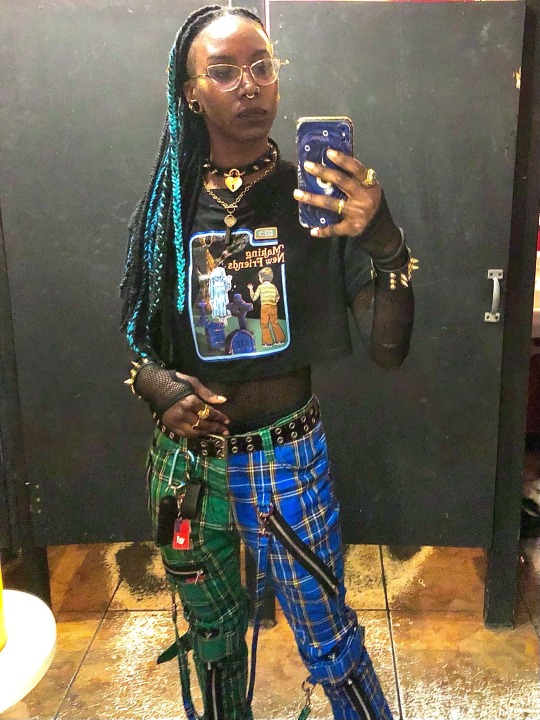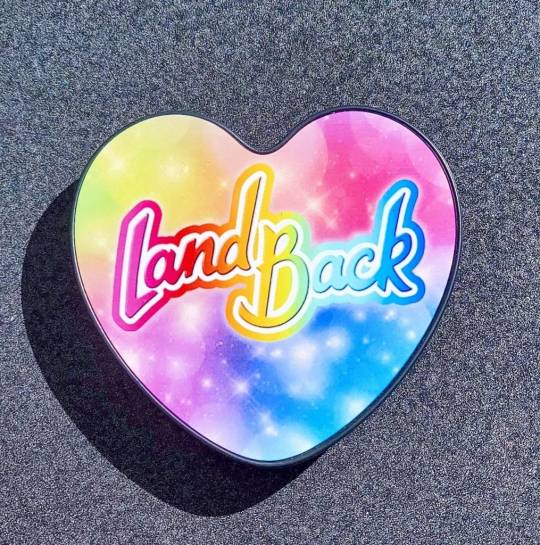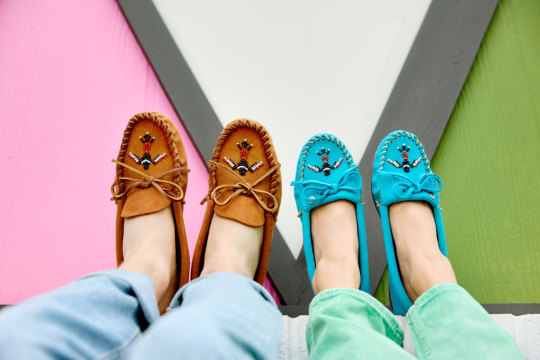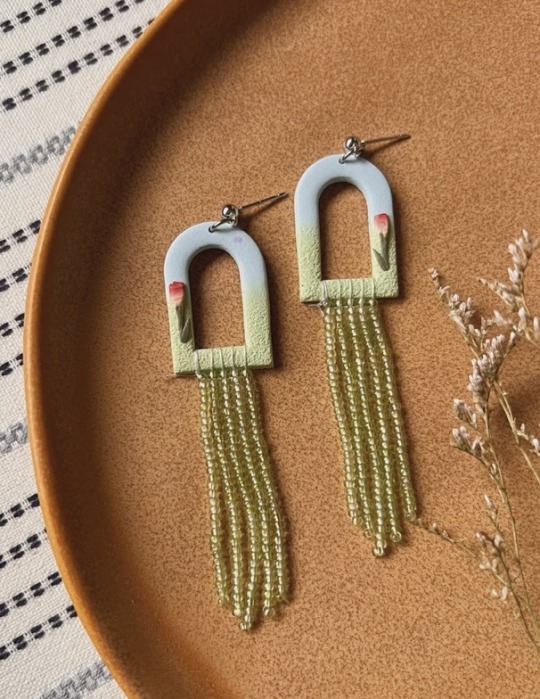#indigenous owned business
Text
Happy Black History Month, help me continue to thrive this month! Cashapp | Venmo | NovsEyeView

#ocean#black tumblr#black lesbian#lesbian#afropunk#punk#nonbinary#two spirit#2 spirit#indigenous#afro indigenous#black history month#black owned business#small business#black art#black artist#indigenous art#tripp nyc#11:11#777#black tourmaline
914 notes
·
View notes
Text
always was, always will be aboriginal land ❤️💛🖤
#dont know how many aussies follow me but its jmportant#for those who arent australia!!#today is invasion day otherwise known as australia#its a celebration of the mass genocide of the aboriginal and torres strait islander people#(the owners of aussie land)#weve also very recently lost a vote to give aboriginal people a say in what happens to that land#thankfully the protests all over the country were huge#ive just gotten home from one that had tens of thousands of people marching through meanjin#if youd like some links to support indigenous owned businesses (v important to do especially today)#feel free to dm me#australia#invasion day#australia day#jan 26th#change the date#vote yes#land back
82 notes
·
View notes
Text
As landback efforts here become more successful I can't help but wonder how long it will take for indigenous reclamation to be described as the predations of settler colonists
#"They don't even look/sound/act Indian!! [they're not tobacco store Indian or tintype photos]#[they look too white/hispanic/black/clean/well off etc they dont live by the old ways that europeans made inpossible to continue]#“They don't even have Indian last names!” [The surname tradition adopted from/imposed by Europeans with a variety of sources and styles#doesn't express indigenous identity enough to me even tho they're named fucking Peltier]#“a nice local family used to own this land [generations old white or black owned business on the site of an indigenous property] until it w#taken by strangers [the original owners who were forced off] with no connection to here from Oklahoma [the reservation they were removed to#and half of them died on route to.]#like will it be 50 years? 100? Am I going to have to live through it?#we're already getting criticism for tribes getting land back and having the audacity to use it and not just turn into nature reserves#they've already turned one genocided minority into race fakers and colonialists why not natives next??
4 notes
·
View notes
Text
Where My Queer Caffeine Addicts At?
#studyblr#studyspo#academia#coffee#aesthetic#lgbt#lgbtqia#queer community#queer owned business#transgender#nonbinary#indigenous#indigenous business
7 notes
·
View notes
Text
Follow me here or on Instagram to find out when these pieces hit the shop!
52 notes
·
View notes
Text
I think I'm beyond the point of an organised belief system or more far-out philosophical stance than I used to be, like I toyed with the idea of philosophical satanism for a while but learning about how shit the Satanic Temple and LaVeyan Satanism were really soured me on satanism on any level outside of aesthetic. Like fuck it I'll be a poser and dig satanic imagery while being actively critical of the institutions and foundational texts of the wider satanic/pagan movement. I'll respect the people and their own belief and adherence to an idealised version of that, but my belief in any of it, even as a transgressive counter-cultural movement, is gone.
Like for a while I just discussed satanism as a concept and talked about the tenets and how it can be a tongue-in-cheek reaction to organised religion that reflects and contrasts and is empowering and all that, and then it turns out one of the guys behind The Satanic Temple, Doug Mesicko or Doug Mesner or whatever his fucking name is, had a pro-eugenics website until very recently, chose to platform KKK members for years and is generally a very shitty, antisemitic gloryhog.
Like satanism as it exists today is a hokey novelty that some carnie came up with, and now the leading satanic org in the world take people to court because they have a copywrited version of Baphomet. It's a con, and it took the wind out of my sails, especially as more people championed TST on the grounds of religious freedom despite their consistently terrible track record in winning court cases for civil liberties.
Pro-Satan, pro-666, pro-power to the people, pro-transgression. That shit belongs to everyone. But my stance to any sort of institutionalization of that is that it should be burned to the ground. Nothing good comes from a counter-cultural institution. It's an oxymoron.
#satanism#anarchism#i think??? is this anarchism??#like get this - I have the same stance on satanism as I do on christianity#in that what it means To You and the positive influence it has on you as a person is your business and your right#but the second you put a guy in charge everything falls apart. fuck doug mesner and tst and also fuck the pope + the entire vatican#churches can be lovely and full of art and cultural landmarks. a lot of people died at the hands of the catholic church#like over a thousand indigenous canadian children who were buried in mass graves under state-funded catholic schools#similarly - there can be satanic/pagan locations that are badass and have great art and can be a meeting point for likeminded people#but it's just as likely that someone's going to be a neo-nazi and/or try to co-opt shit for their own ends#and fuck up a lot of goodwill and a lot of good people for selfish ends#yeah it's on a lesser scale than the vatican but it's the same issue. imagery and community and recognition of the self and others is great#art and community is great#putting someone In Charge Of A Community and putting that community into tiers fucks everything up. it's all about personal belief#and whether the person in charge is named John/Mary or Odin/Prarie it usually fucks everything up#a christian is just as valid praying at a church as they are lighting a candle at home or against a brick wall or with friends#a satanist is just as valid whether they're a card-carrying member of a satanic org or if they're doing their own thing#as long as it gets you to the same point of being good to yourself and to others#that gets harder to do when you have someone In Charge of the shit you're into#so cut out the middleman and live to a strong code of ethics. and frankly take as much of the middlemans power as you can#because fuck the middleman. the middleman should mean jack shit to you in my opinion. fuck em
6 notes
·
View notes
Text
what’s fucked up is that what the British did in the highlands displaced a lot of Scottish people who became part of the waves of migration to the new world which both displaced untold scores of indigenous people and integrated into the population. John Ross was largely of Scottish descent, but served as Principal Chief of the Cherokee and was a key figure in the resistance to the displacement of Cherokee nation; on the other hand, you have the history of white mountaineers descended (at least narratively) from Scottish highlanders largely forming the vanguard of white settlers displacing native nations.
#and while this issue of mixed indigenous people is always thorny I don’t think it’s controversial to say that Ross’s ability#to gain any outside legitimacy at all owed to him being mixed and eligible for integratory education.#it’s also worth noting how he attempted to run ‘legitimate’ businesses like a slave owning plantation#but was still dispossessed of them by laws discriminating against native Americans owning property#idk it’s so ducking messy and there’s no good way to untangle these relations that I’m capable of#other than to say ‘whiteness’ is always defined by whatever best supports the narrative needed
6 notes
·
View notes
Text
#art#handmade#kadan and co#artists on tumblr#black owned#glass#glassworks#handmade jewelry#crystal beads#crystals#swarovski crystal beads#design#designer jewelry#designer#jewelry design#shop small#shop small business#indigenous owned#indigenous business#non binary pride#non binary
2 notes
·
View notes
Text
Louisville. KENTUCKY

#nation of gods and earths#supreme mathematics#five percent nation#allah school in mecca#hip hop#father allah#allah#louisville#Kentucky#lexington#bowling green#black owned businesses#latinos#Poor Righteous Teachers#5% nation of gods and earths#asian#indigenous peoples
4 notes
·
View notes
Photo



Rainbow Land Back mousepad, pop socket, and tank top by NSRGNTS
#Land back#Native Art#native artists#native owned#native artist#native owned businesses#rainbow fashion#native owned business#rainbow art#fashion#clothes#native rights#clothing#rainbow sparkles#rainbow#sparkles#indigenous owned#indigenous artist#indigenous artists#indigenous#indigenous art
10 notes
·
View notes
Text
it has come to my attention that it is not only pride month but also Indigenous History Month so I guess lgbtq+ indigenous people are just extra powerful this month.
3 notes
·
View notes
Text


Fried Egg Cloud Kid Pin / Brooch from QVWC
#'QVWC SHOP is a feminist design store that showcases women (cis. trans) and non-binary artists designers and makers from across Victoria.'#if u ever visit i would say pay a visit to this store - great products and it has women + migrant + lgbtq + indigenous. owned business#inclusive size. plastic free packaging. recycled materials. social enterprise. cruelty free. cert organic. etc#pins#brooch#small business#jewelry#jewellery#women owned business#indigenous#nonbinary#sustainability#recycling#lgbtq#women#design#cute#inclusivity
0 notes
Text
funds for indigenous communities affected by the canada wildefires *updated*
grassy narrows first nations (ontario) needs funds for an escape route
odawa first nations (quebec-ontario) is raising funds for evacuees
algonquins of barriere (mitchikanibikok inik in alberta) lake mutual aid request
you can drop donations for the odawa first nations at 815 st laurent blvd in ottawa
you can drop off food donations for mitchikanibikok inik at the ramada plaza in gatineau; you can also email info/@/health.rapidlake.com with mutual aid donations. please note that the maniwaki native friendship center is now closed to donations
if you’re directly affected, the pueblo action alliance has developed a guide for DIY filtration for the smoke
updates (as of 6 june 2023):
donate funds for evacuees from little red river cree nation (via kahkakow)
k'atl'odeeche first nations needs funds to rebuild homes and businesses lost (via aelabee)
i’ll update this as i find more fundraising initiatives and please free to share your own. reblogs with anything than sharing resources/mutual aid requests/fundraising opportunities get blocked.
#canada wildfires#mutual aid#fundraising#indigenous#signal boost#for the sake of this post i am a white canadian settler and have not see any comprehensive list on this website yet which is why im posting
29K notes
·
View notes
Text
For usamericans who may not know how to support decolonization and indigenous people in their every-day lives, may I suggest checking this list of native-owned businesses, curated and maintained by indigenous folks. There's food, candles, cbd pre-rolls, clothes, jewelry, hats, baby things, handicrafts, art, and hundreds of other useful and wonderful things. I check this list before I buy non-native owned as often as I can.
Also check out the native-owned (pulitzer-prize winner Louise Erdrich started it!) bookstore and press Milkweed Editions (dot org) for an amazing selection of books by indigenous authors. I recommend Braiding Sweetgrass by Robin Wall Kimmerer (a collection of essays that will change your thinking if your mind is open at all) that's great for sitting down to read for bite-sized chunks. For book recommendations, check out this infographic!
Do you own property and want to support landback but still need a place to live? Odds are good that there's established precedence in your area to transfer its jurisduction to a local tribe and pay your land taxes and etc to them instead of the settler government!
Here is a list of charities and fundraisers for indigenous support.
Other ways to educate yourself and learn what indigenous people are working on nationally and locally is to follow indigenous people online! Many Native peoples on various social medias tag with #indigenous, #native, and by looking at those you will find many other tags and people to follow.
If you have extra cash, consider paying indigenous people's bail, donating to some of the causes linked above, or look for local initiatives to support in your own community!
#indigenous#native#decolonize your thoughts#decolonize#uspol#usa#usamerican politics#decolonization#land back#colonialism#anti colonialism#colonization#resources#links#woodsfae
5K notes
·
View notes
Text

Article Link
"Minnetonka first started selling its “Thunderbird” moccasins in 1965. Now, for the first time, they’ve been redesigned by a Native American designer.
It’s one step in the company’s larger work to deal with its history of cultural appropriation. The Minneapolis-based company launched in the 1940s as a small business making souvenirs for roadside gift shops in the region—including Native American-inspired moccasins, though the business wasn’t started or run by Native Americans. The moccasins soon became its biggest seller.

[Photo: Minnetonka]
Adrienne Benjamin, an Anishanaabe artist and community activist who became the company’s “reconciliation advisor,” was initially reluctant when a tribal elder approached her about meeting with the company. Other activists had dismissed the idea that the company would do the work to truly transform. But Benjamin agreed to the meeting, and the conversation convinced her to move forward.
“I sensed a genuine commitment to positive change,” she says. “They had really done their homework as far as understanding and acknowledging the wrong and the appropriation. I think they knew for a long time that things needed to get better, and they just weren’t sure what a first step was.”

Pictured: Lucie Skjefte and son Animikii [Photo: Minnetonka]
In 2020, Minnetonka publicly apologized “for having benefited from selling Native-inspired designs without directly honoring Native culture or communities.” It also said that it was actively recruiting Native Americans to work at the company, reexamining its branding, looking for Native-owned businesses to partner with, continuing to support Native American nonprofits, and that it planned to collaborate with Native American artists and designers.
Benjamin partnered with the company on the first collaboration, a collection of hand-beaded hats, and then recruited the Minneapolis-based designer Lucie Skjefte, a citizen of the Red Lake Nation, who designed the beadwork for another moccasin style and a pair of slippers for the brand. Skjefte says that she felt comfortable working with the company knowing that it had already done work with Benjamin on reconciliation. And she wasn’t a stranger to the brand. “Our grandmothers and our mothers would always look for moccasins in a clutch kind of situation where they didn’t have a pair ready and available to make on their own—then they would buy Minnetonka mocs and walk into a traditional pow wow and wear them,” she says. Her mother, she says, who passed away in 2019, would have been “immensely proud” that Skjefte’s design work was part of the moccasins—and on the new version of the Thunderbird moccasin, one of the company’s top-selling styles.

[Photo: Minnetonka]
“I started thinking about all of those stories, and what resonated with me visually,” Skjefte says. The redesign, she says, is much more detailed and authentic than the previous version. “Through the redesign and beading process, we are actively reclaiming and reconnecting our Animikii or Thunderbird motif with its Indigenous roots,” she says. Skjefte will earn royalties for the design, and Minnetonka will also separately donate a portion of the sale of each shoe to Mni Sota Fund, a nonprofit that helps Native Americans in Minnesota get training and capital for home ownership and entrepreneurship.
Some companies go a step farther—Manitobah Mukluks, based in Canada, has an Indigenous founder and more than half Indigenous staff. (While Minnetonka is actively recruiting more Native American workers, the company says that employees self-report race and it can’t share any data about its current number of Indigenous employees.) Beyond its own line of products, Manitobah also has an online Indigenous Market that features artists who earn 100% of the profit for their work.
White Bear Moccasins, a Native-owned-and-made brand in Montana, makes moccasins from bison hide. Each custom pair can take six to eight hours to make; the shoes cost hundreds of dollars, though they can also be repaired and last as long as a lifetime, says owner Shauna White Bear. In interviews, White Bear has said that she wants “to take our craft back,” from companies like Minnetonka. But she also told Fast Company that she doesn’t think that Minnetonka, as a family-owned business, should have to lose its livelihood now and stop making moccasins.
The situation is arguably different for other fashion brands that might use a Native American symbol—or rip off a Native American design completely—on a single product that could easily be taken off the market. Benjamin says that she has also worked with other companies that have discontinued products.
She sees five steps in the process of reconciliation. First, the person or company who did wrong has to acknowledge the wrong. Then they need to publicly apologize, begin to change behavior, start to rebuild trust, and then, eventually, the wronged party might take the step of forgiveness. Right now, she says, Minnetonka is in the third phase of behavior change. The brand plans to continue to collaborate with Native American designers.
The company can be an example to others on how to listen and build true relationships, Benjamin says. “I think that’s the only way that these relationships are going to get any better—people have to sit down and talk about it,” she says. “People have to be real. People have to apologize. They have to want to reconcile with people.”
The leadership at Minnetonka can also be allies in pushing other companies to do better. “My voice is important at the table as an Indigenous woman,” Benjamin says. “Lucie’s voice is important. But at tables where there’s a majority of people that aren’t Indigenous, sometimes those allies’ voices are more powerful in those spaces, because that means that they’ve signed on to what we’re saying. The power has signed on to moving forward and we agree with ‘Yes, this was wrong.’ That’s the stuff that’s going to change [things] right there.”"
-via FastCompany, February 7, 2024
#indigenous#indigenous artists#indigenous art#moccasins#thunderbird#native american#native american art#cultural appropriation#indigenous peoples#cultural representation#minnesota#minnetonka#minneapolis#red lake nation#ojibwe#anishinaabe#reconciliation#fashion#fashion news#good news#hope#indigenous designers#native artist#indigenous artist
1K notes
·
View notes
Text

“Olive” earrings from Small City Creative
#wishlist#personal#small business#jewelry#earrings#drop earrings#beadwork#beaded earrings#indigenous owned#POC owned#small city creative
0 notes